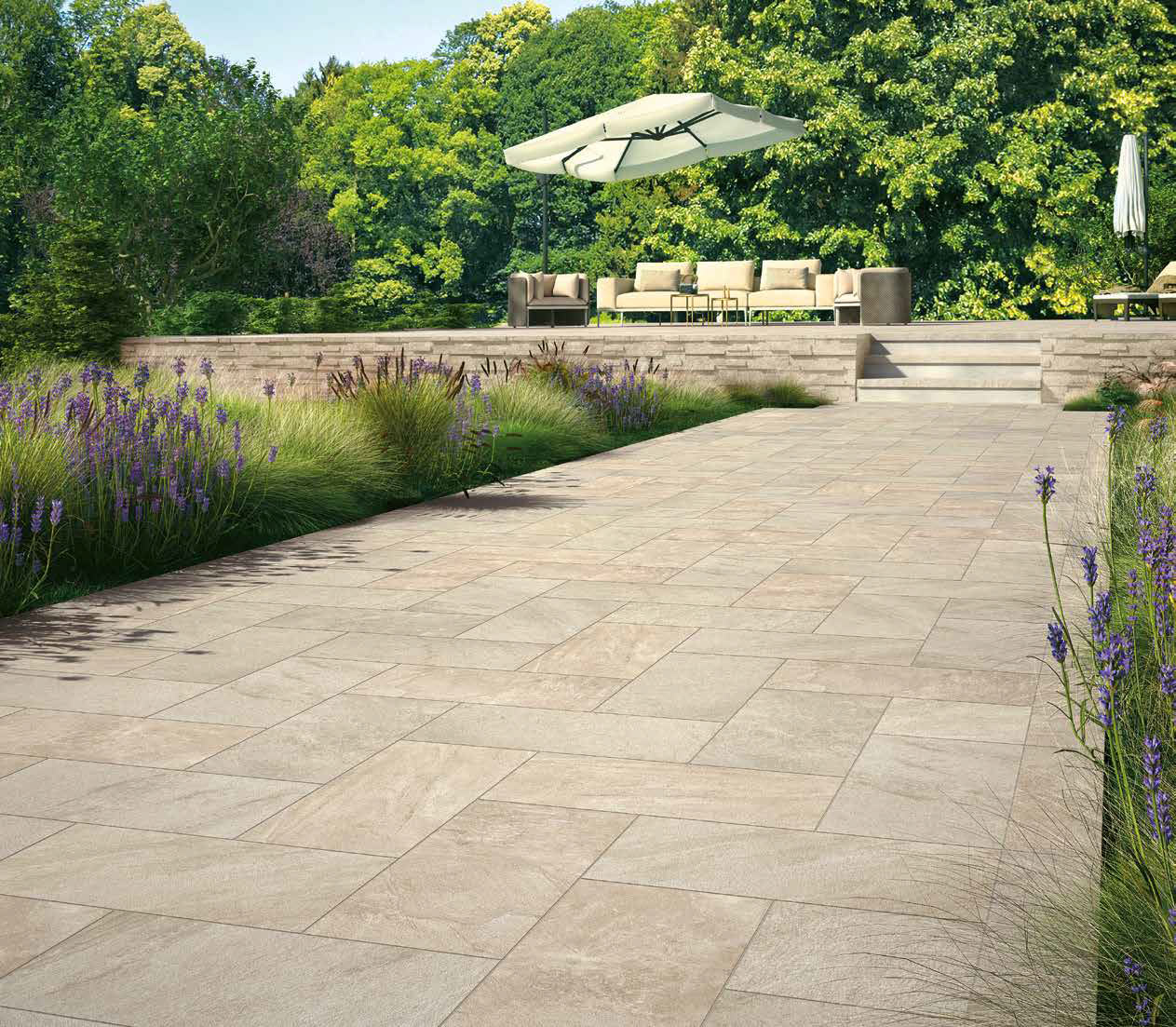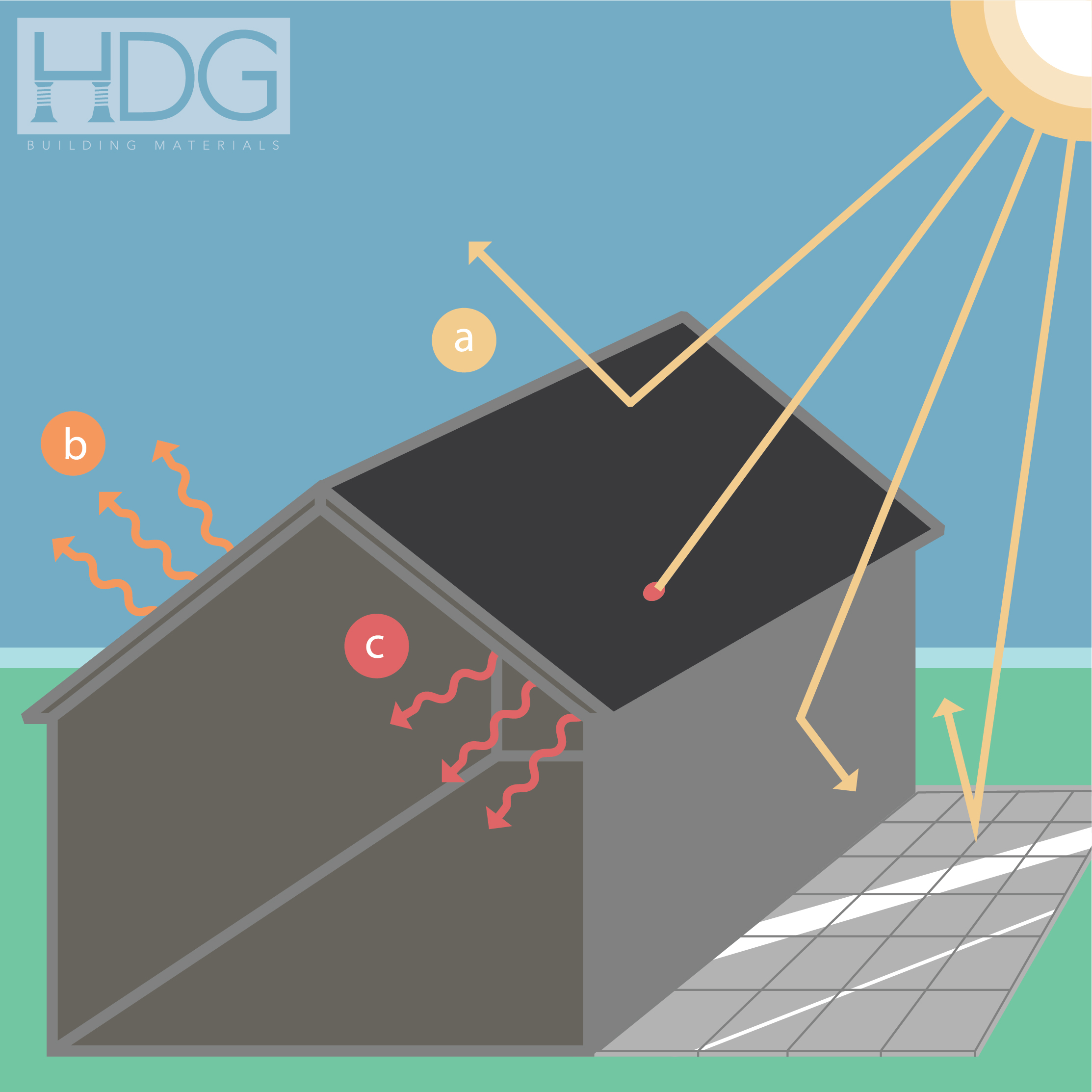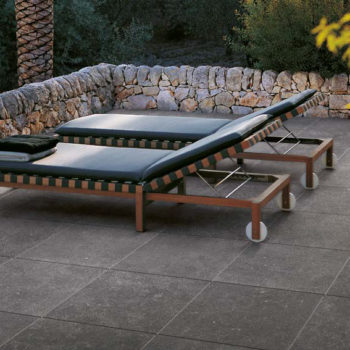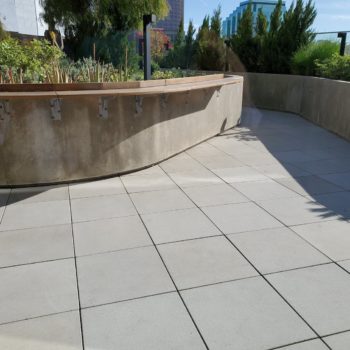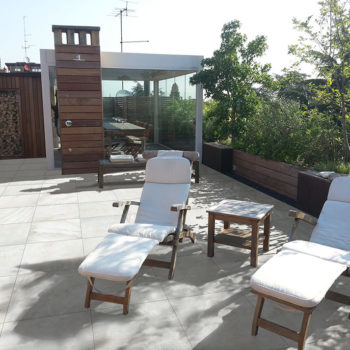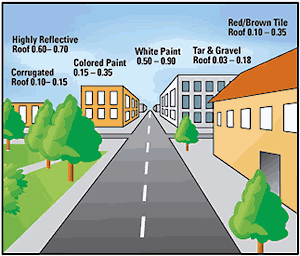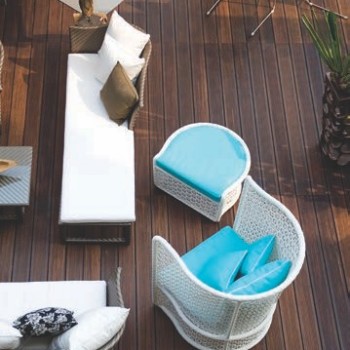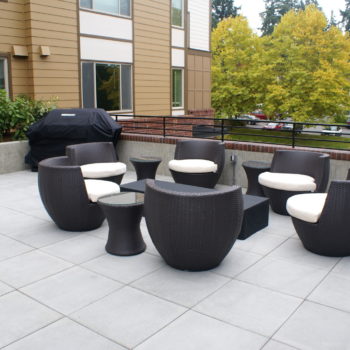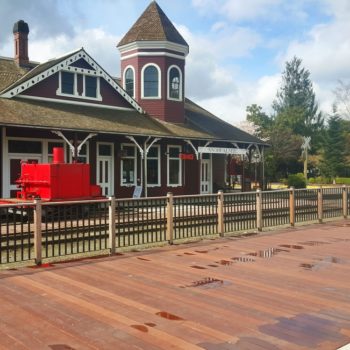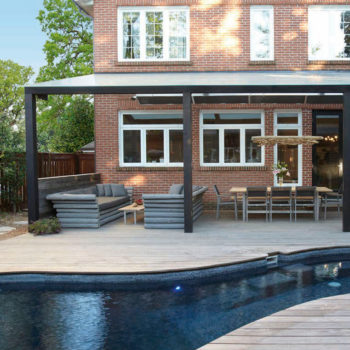How Hot Will the Surface Get?
Solar Reflectance Index (SRI) is one consideration in choosing building materials. This measure lets you know how hot the surface is likely to get in the presence of direct sunlight. This is especially relevant for decking surfaces that may get too hot for human comfort. Think pool surrounds and bare feet—human or canine. But barefoot comfort isn’t the only consideration.
Vertical surfaces are also subjected to the sun’s energy. Materials used in a building’s façade can influence the comfort within the structure and also impact the energy used for heating and cooling.
Solar Reflectance Index (SRI)
More technically speaking, the sun’s energy is either reflected or absorbed by materials. When the sun goes away, the materials then give off the previously absorbed energy; this is called thermal emittance.
The Solar Reflectance Index (SRI) combines solar reflectance and thermal emittance into a single value that expresses how hot a material is likely to become when exposed to sunlight. SRI is measured on a scale from 0 to 100, where 0 represents a black surface that absorbs most solar energy and becomes very hot, and 100 represents a bright white surface that reflects most energy and stays much cooler. Many common building materials fall somewhere between those extremes.
A higher SRI means a surface is better able to reject solar heat. A lower SRI means the material is more likely to become hot in direct sunlight.
For specific examples, see the section below with sample materials and their SRI values.

